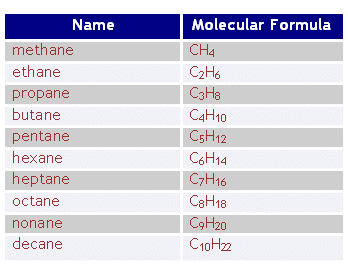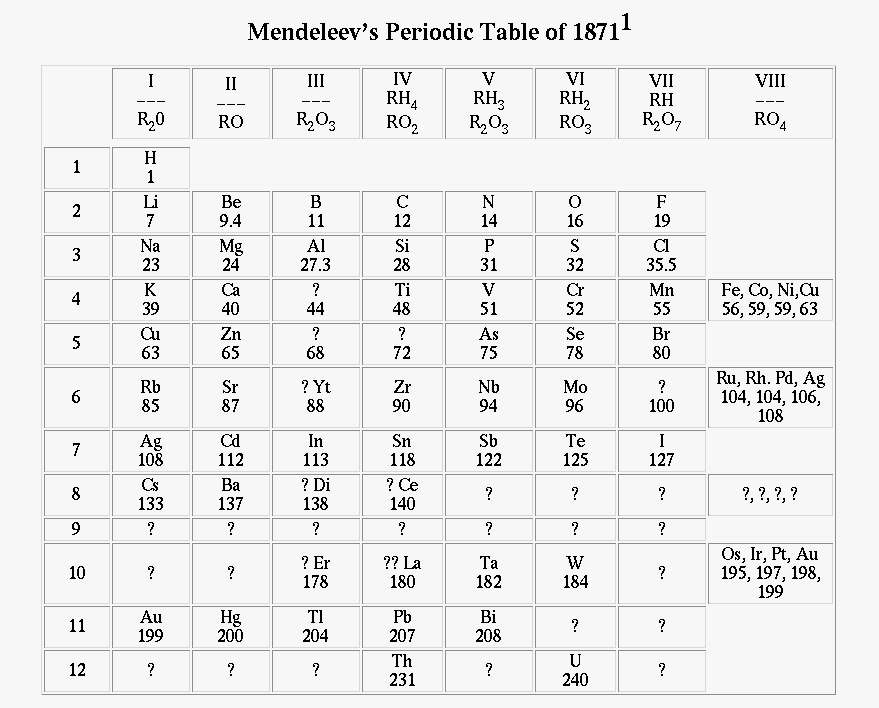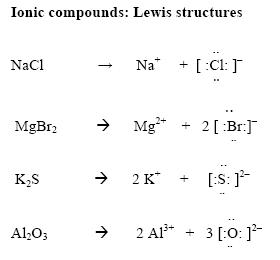Functional groups- specific group of atoms in a molecule & gives the molecule the ability to react in a specific manner/give it special properties.
They're organic compounds that contain elements other than Carbon and Hydrogen. It can include single atoms (Ex. Cl, Br) or groups of atoms (Ex. NO2, NH2)
Examples include alcohol, aldehydes, amines, ethers, ester, etc.
The main ones we will focus on are:
1) Halides & Nitro Compounds
2) Alcohols
3) Aldehydes & Ketones
Halides & Nitro Compounds:
It's named similar to hydrocarbons and are attached to alkenes, alkanes, and alkynes.
How to name them? Main chain names receieve the following prefixes if that certain group is attached:
Halogens:
F=fluoro
Cl= chloro
Br= bromo
I= iodo
Nitro:
NO2= nitro
Use a number to indicate where it's attached to the hydrocarbon chain. If more than one is present, use prefixes di, tri, tetra, etc. If it contains more than one group, put them in alphabetical order. Number from the end which gives the lowest set of numbers.
Properties of Halogenated Compounds:
1) Tend to be insoluble in water (similar to alkanes)
2) Fluorinated compounds tend to be unreactive (inert)
Ex. Teflon is resistant to reactions with most chemicals
3) Chloro and bromo compounds are susceptible to chemical attacks under drastic conditions
4) Iodo compounds are more reactive and can be easily replaced by other functional groups
Properties of Nitro Compounds:
1) Soluble in water
2) Unreactive to chemical attacks except under drastic conditions
3) Explosive (Ex. TNT (trinitrotulene) and nitroglycerine)
4) Pleasant odour.
Alcohols- organic compounds containing OH group
How to name it? Number the hydrocarbon chain and give the lowest possible number for the OH group. Put the number before the name of the parent hydrocarbon, separated by a dash. Alkyl groups are placed in front of number for the OH. Change the 'e' ending to 'ol'. An example of an alcohol is in the picture on the left which is ethanol. And oh-so happens to look like a dog. LOL.
Properties of Alcohols:
1) OH group tends to make alcohols soluble in water. Non polar hydrocarbons chains make it insoluble.
Methanol, ethanol, and propanol are highly soluble in water due to hydrocarbon being small. Butanol is moderately soluble. Penntanol and high are insoluble in water.
2) Poisonous to some degree. Includes ethanol (in alcoholic beverages)
Multiple-OH:
If a compound has more than one group, number both and add diol, triol, etc endings.
Aldehydes- organic compound containing a C=O group at the end of the hydrocarbon chain
It follows the standard rules but changes the parent chain ending to 'al'. The simplest of this group is methanal (formaldehyde).
Ketones-organic compound containing C=O group at a position other than the end of the hydrocarbon chain.
It follows the standard rules but add 'one' at the ending to the parent chain.
TetraCuTiEs' Chemistry Blog
Thursday, June 2, 2011
Tuesday, May 31, 2011
Alkenes and Alkynes
So what's so special about Alkenes and Alkynes? Well the big secret is that they can form DOUBLE and TRIPLE bonds! (carbon only).
 Use the example of Butane, this is a Cis because the H is on the same side as each other and CH3 or H3C is on the same side as each other.
Use the example of Butane, this is a Cis because the H is on the same side as each other and CH3 or H3C is on the same side as each other. This is another example of Butane but this is a Trans because H and CH3 are diagonal from each other and are not on the same side.
This is another example of Butane but this is a Trans because H and CH3 are diagonal from each other and are not on the same side.
The naming rule is exactly the same thing as Alkanes. Positioning bonds is based if the bonds have the lowest number and if it is put in front of the parent chain.
Alkenes are made up with only hydrogen and carbon (hydrocarbon). Hydrocarbon with on or more double bonds are placed between carbon atoms. The ending changes from ~ane to ~ene.
Try this!
This is a 4-methyl 2-pentene
ex. Try to draw 2,5-dimethyl-2-heptene
CH3 CH3 | | CH3CH2CHCH2CH=CCH3
Geometric Isomers are only used in Alkenes. They have the same formula but have different arrangements.
Trans and Cis
 Use the example of Butane, this is a Cis because the H is on the same side as each other and CH3 or H3C is on the same side as each other.
Use the example of Butane, this is a Cis because the H is on the same side as each other and CH3 or H3C is on the same side as each other. This is another example of Butane but this is a Trans because H and CH3 are diagonal from each other and are not on the same side.
This is another example of Butane but this is a Trans because H and CH3 are diagonal from each other and are not on the same side. Alkynes are hydrocarbons that make triple bonds and it to is positioned between between carbon atoms. When naming the ending changes from ~ane and ~ene to ~yne
Try practicing some on this website! Practice Naming
Jokes of the day!! HAHAHAHAAAA
A group of organic molecules were having a party, when
a group of robbers broke into the room and stole all
of the guests joules.A tall, strong man, armed with a
machine gun came into the room and killed the robbers
one by one.The guests were very grateful to this man,
and they wanted to know who he was. He replied: My
name is BOND, Covalent Bond.
Jokes of the day!! HAHAHAHAAAA
A group of organic molecules were having a party, when
a group of robbers broke into the room and stole all
of the guests joules.A tall, strong man, armed with a
machine gun came into the room and killed the robbers
one by one.The guests were very grateful to this man,
and they wanted to know who he was. He replied: My
name is BOND, Covalent Bond.
Sunday, May 29, 2011
Organic Chemistry.
Organic Chemistry is also known as the chemistry of carbon compounds.
Organic Compounds have low melting points, and can form chains of carbon atoms, linked in a straight-line, circular pattern, or branched pattern.
They can also link with other atoms in either a single bond, double bond or triple bond.
A hydrocarbon is a compound comprised of only hyrogen and carbon.
Alkanes are saturated hydrocarbon, in which the carbon atoms are bonded with single bonds.
Names of Alkanes: Here is a table of the differet alkanes and its molecular formula.


The formula for writing the formula of alkanes is: CnH2n+2
Branched hydrocarbons or Substituted hydrocarbons are hydrocarbon attached to the side of the original hydrocarbon.

A alkyl group is an aklane which has lost a hydrogen atom.
Thursday, May 19, 2011
Chemical Bonding!
3 Types of Bonding:
1) Ionic bonding- the transfer between 2 atoms to form a positive ion and negative ion.
2) Non-polar covalent bonding- equal sharing of electrons
3) Polar covalent bonding- unequal sharing of electrons
So let's start with ionic bonding. This uses the electrostatic force. This is the force that exists between charged particles as a result of attraction/repulsion. It operates equally in all directions. It's important to know that ionic bonds are very strong, so compounds held together with this bond have a high melting temperature.
We know that in an ionic bond, a metal and non metal combines. Why does the metal lose valence electrons? This is explained by electronegativity. Metals have a low electronegativity and non metals have high electronegativity which results in high ionization energies. The difference in this electronegativity will determine the electron sharing. The Pauling Scale (picture) measures electronegativity. To find the electronegativity difference, you can use this formula:
Now about non polar covalent bonding. It involves equal sharing to satisfy the octet rule. It is VERY STRONG. Now for some of these bonds such as CH4, O2, and F2, they have low melting points. Why? Because of weak bonds.
So what holds the bonds together? Intramolecular forces that are found within the molecule, and responsible to hold the atoms of molecules together. Intermolecular forces are between molecules and are responsible for the bonding between molecules.
London Forces are weak attractive forces due to temporary dipolar attractions between neighbouring atoms. They can exist individually or parts of a molecule. Also the greater the atomic number of the atom, the stronger the London force occurs. What's a dipole? It's a partial separation of charge where one end of a molecule/bond has a slight excess positive charge and the other end has a slight excess of negative charge.
The last bonding is polarity which involves the molecule's electrical balance. If there's an imbalance, it's polar. If it's balanced, then it's non polar.
Electronegativity effects this because the greater of this it has, the greater pull of the electrons in the bond will be pulled more towards itself and the shared electrons spend more time near the atom. High electronegativity results in partial negative. (δ- between 0 & -1) Low electronegativity results in partial positive. (δ+ between 0 & +1) The δ symbol represents partial.
An arrow indicates the migration of electrons. It will point to the partial negative atom involved in the bond. An example is H2O:
H: 2.20
O:3.44
3.44-2.20= 1.24
This means it is a polar covalent bond.
1) Ionic bonding- the transfer between 2 atoms to form a positive ion and negative ion.
2) Non-polar covalent bonding- equal sharing of electrons
3) Polar covalent bonding- unequal sharing of electrons
So let's start with ionic bonding. This uses the electrostatic force. This is the force that exists between charged particles as a result of attraction/repulsion. It operates equally in all directions. It's important to know that ionic bonds are very strong, so compounds held together with this bond have a high melting temperature.
We know that in an ionic bond, a metal and non metal combines. Why does the metal lose valence electrons? This is explained by electronegativity. Metals have a low electronegativity and non metals have high electronegativity which results in high ionization energies. The difference in this electronegativity will determine the electron sharing. The Pauling Scale (picture) measures electronegativity. To find the electronegativity difference, you can use this formula:
ENeg Diff. = lENeg1 - ENeg 2l
If ENeg Diff <0.5 it's a non polar covalent bond
If ENeg Diff > 0.5 and <1.8 it's a polar covalent bond
If ENeg Diff > 1.8 it's an ionic bond
Now about non polar covalent bonding. It involves equal sharing to satisfy the octet rule. It is VERY STRONG. Now for some of these bonds such as CH4, O2, and F2, they have low melting points. Why? Because of weak bonds.
So what holds the bonds together? Intramolecular forces that are found within the molecule, and responsible to hold the atoms of molecules together. Intermolecular forces are between molecules and are responsible for the bonding between molecules.
London Forces are weak attractive forces due to temporary dipolar attractions between neighbouring atoms. They can exist individually or parts of a molecule. Also the greater the atomic number of the atom, the stronger the London force occurs. What's a dipole? It's a partial separation of charge where one end of a molecule/bond has a slight excess positive charge and the other end has a slight excess of negative charge.
The last bonding is polarity which involves the molecule's electrical balance. If there's an imbalance, it's polar. If it's balanced, then it's non polar.
Electronegativity effects this because the greater of this it has, the greater pull of the electrons in the bond will be pulled more towards itself and the shared electrons spend more time near the atom. High electronegativity results in partial negative. (δ- between 0 & -1) Low electronegativity results in partial positive. (δ+ between 0 & +1) The δ symbol represents partial.
An arrow indicates the migration of electrons. It will point to the partial negative atom involved in the bond. An example is H2O:
H: 2.20
O:3.44
3.44-2.20= 1.24
This means it is a polar covalent bond.
Tuesday, May 10, 2011
Drawing Electron Dot and Lewis Diagrams
When drawing electron dot or Lewis Diagrams, always keep in mind that the nucleus is represented by the atomic symbol.
Dots represent electrons in electron dot diagrams.
Lines represent the bond of two electrons in Lewis Diagrams - also known as structural diagrams.
There are four orbitals - at the north, east, south, and west sides of the nucleus as shown.
Now in a covalent compound:
While hydrogen has one valence electron, chlorine has 7. When they are drawn like this, it means that hydrogen and chlorine are sharing the two electrons between them. These two electrons can also be represented as a horizontal line in a structural diagram.
Now in ionic compounds:
In the first example, Na has lost an electron and is now an ion with a +1 charge - it now has an empty valence shell and is stable. Cl has gained this electron and is now an ion with a -1 charge - it now has a full valence shell and is stable. These two ions are held together by their opposite attraction.
Diagrams for Polyatomic Ions
Because polyatomic ions have charges - electrons must be added or taken away. I find that it is easiest to do this after we have paired up the existing electrons. In the above example, we see CO3. After pairing up carbon's four valence electrons with those of the two oxygens on the left and on the right, we see that we need two more electrons in order to pair with the third oxygen on top. The 2- subscript means that the two electrons have been added.
Enjoy!
Dots represent electrons in electron dot diagrams.
Lines represent the bond of two electrons in Lewis Diagrams - also known as structural diagrams.
There are four orbitals - at the north, east, south, and west sides of the nucleus as shown.
Now in a covalent compound:
While hydrogen has one valence electron, chlorine has 7. When they are drawn like this, it means that hydrogen and chlorine are sharing the two electrons between them. These two electrons can also be represented as a horizontal line in a structural diagram.
Now in ionic compounds:
In the first example, Na has lost an electron and is now an ion with a +1 charge - it now has an empty valence shell and is stable. Cl has gained this electron and is now an ion with a -1 charge - it now has a full valence shell and is stable. These two ions are held together by their opposite attraction.
Diagrams for Polyatomic Ions
Because polyatomic ions have charges - electrons must be added or taken away. I find that it is easiest to do this after we have paired up the existing electrons. In the above example, we see CO3. After pairing up carbon's four valence electrons with those of the two oxygens on the left and on the right, we see that we need two more electrons in order to pair with the third oxygen on top. The 2- subscript means that the two electrons have been added.
Enjoy!
Tuesday, May 3, 2011
Periodic Trends
So what are periodic trends?
They are progress of increasing or decreasing with the charactierstics of certain elements.
They're are a lot of trends and we must know them all:
1)Metallic Properties
2)Atomic Radius
3)Ionization Energy
4)Electronegativity
5) Reactivity
6)Ion Cahrge
7) Melting and Boiling Point
8) Density
Here are some of the trends...let's start of with...
Metallic Properties

The elements change from left to right arosss the table and elelements that are more metallic moves down the table.
Atomic Radius:

The atom decreases aross a row from left to right and increases going down a family. When the atom is going from left to right the atomic number increases along with the nucleus.
When the atoms are going down a family the orbits are more compact and therefore the inner electons attract each other whereas the elctrons on th outer end repel each other.
Reactivity:

Metals and Non-metals have and show different trends. When ther metal moves down a family and right a row it is more reactive and when going up and left it is less reactive.
Non-metals are the opposite or metals, it increases or it's more reactive as an atom goes up a family.
Melting and Boiling Point:

The elements from the center has the highest melting point and the Noble Gases has the lowest melting point.
Ionization Energy:

Ionization Energy are enegies needed to remove one elctron from an atom. They increase as it does up and right in t he periodic table and all the noble gases have high ionization energy. The elctrons have these atoms remove eaily. When going left to right it has a higher attraction between the nucleus and the elctrons whereas the outer electrons decreases as it goes down a group.
Electronegativity:

Electornegativity is how much atom wants to gain electrons. When the atoms goes left to right and up they increase and decreases going down a group Atoms with high electornegativity are strognly attracts other elctrons from another atom or it may remove an electron from a neighbor.
They are progress of increasing or decreasing with the charactierstics of certain elements.
They're are a lot of trends and we must know them all:
1)Metallic Properties
2)Atomic Radius
3)Ionization Energy
4)Electronegativity
5) Reactivity
6)Ion Cahrge
7) Melting and Boiling Point
8) Density
Here are some of the trends...let's start of with...
Metallic Properties
The elements change from left to right arosss the table and elelements that are more metallic moves down the table.
Atomic Radius:
The atom decreases aross a row from left to right and increases going down a family. When the atom is going from left to right the atomic number increases along with the nucleus.
When the atoms are going down a family the orbits are more compact and therefore the inner electons attract each other whereas the elctrons on th outer end repel each other.
Reactivity:
Metals and Non-metals have and show different trends. When ther metal moves down a family and right a row it is more reactive and when going up and left it is less reactive.
Non-metals are the opposite or metals, it increases or it's more reactive as an atom goes up a family.
Melting and Boiling Point:
The elements from the center has the highest melting point and the Noble Gases has the lowest melting point.
Ionization Energy:
Ionization Energy are enegies needed to remove one elctron from an atom. They increase as it does up and right in t he periodic table and all the noble gases have high ionization energy. The elctrons have these atoms remove eaily. When going left to right it has a higher attraction between the nucleus and the elctrons whereas the outer electrons decreases as it goes down a group.
Electronegativity:
Electornegativity is how much atom wants to gain electrons. When the atoms goes left to right and up they increase and decreases going down a group Atoms with high electornegativity are strognly attracts other elctrons from another atom or it may remove an electron from a neighbor.
Sunday, May 1, 2011
Periodic Trends

In 1870, Dmitri Mendeleev was the first person to decide to put all the elements on a "table" so that it could be more organized and easier to study. Since then, it has the periodic table has been made better along with additional elements.
To find out what the periodic trends are, we have to graph it and study them carefully.
Density: After graphing, you should be able to find that density usually increases along with the atomic number.
Melting and Boiling Point: After graphing, you should be able to find out that the melting and boiling points for metals usually increase from bottom to top of a group, and that for non-metals, they have an increase for melting and boiling points.
Ionization Energy: After graphing, you should be able to find out that it increases in a period (left to right), and it decreases as a group (top to bottom).Electronegativity: After graphing, you should be able to find that it increases from left to right.
Atomic Radius: After graphing, you should be able to find that it decreases as a period and increases as a group.
Subscribe to:
Posts (Atom)







